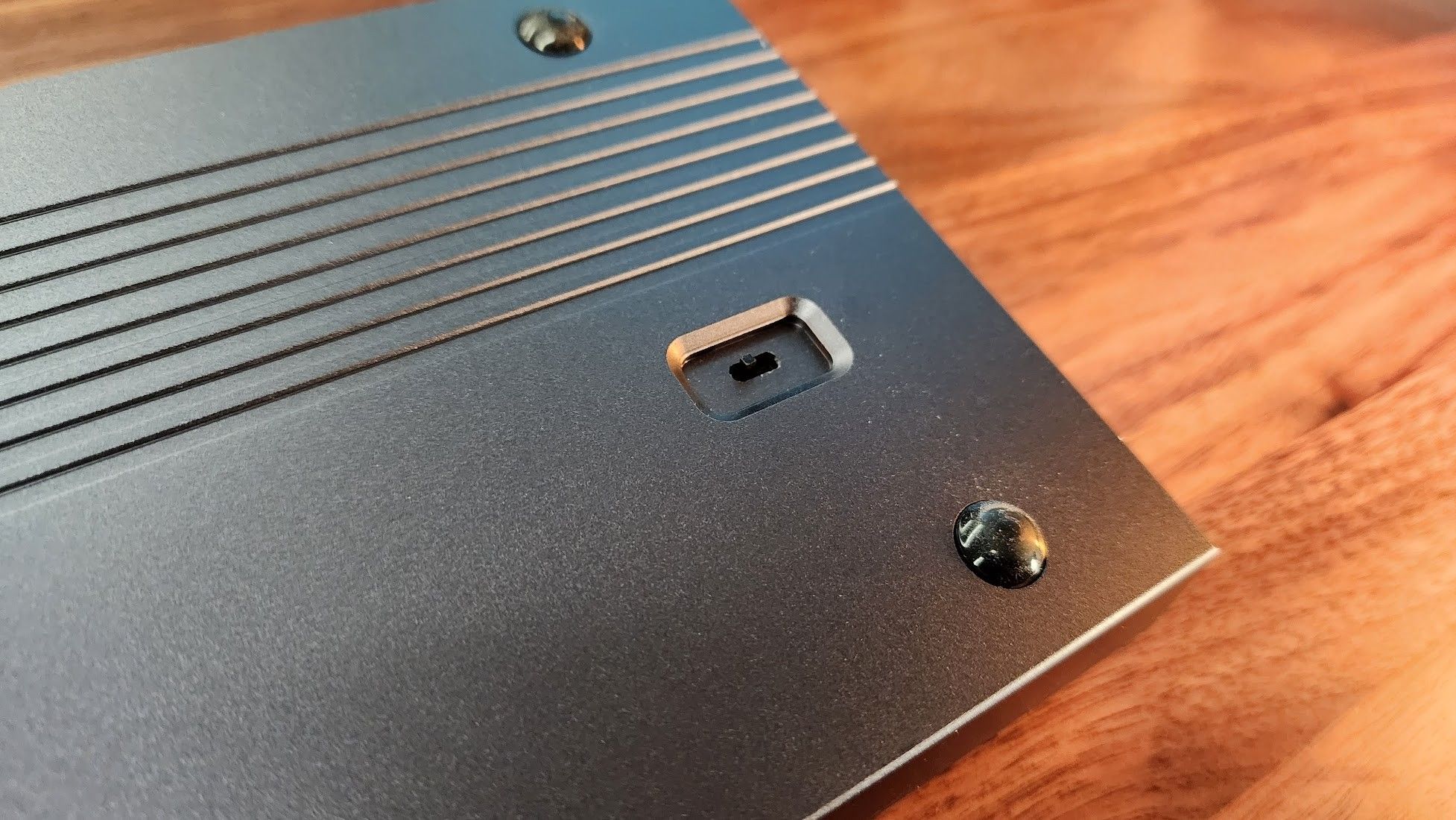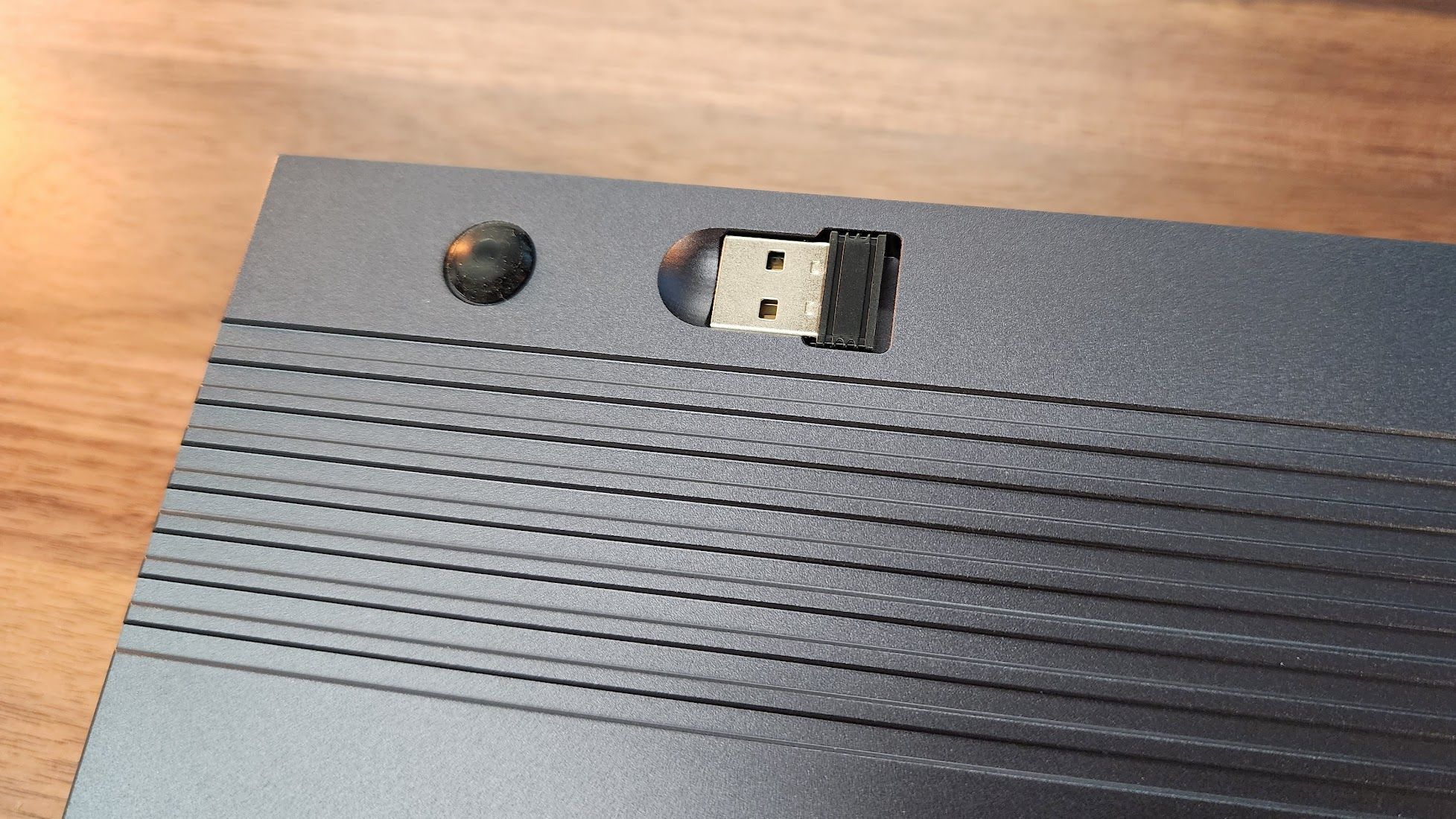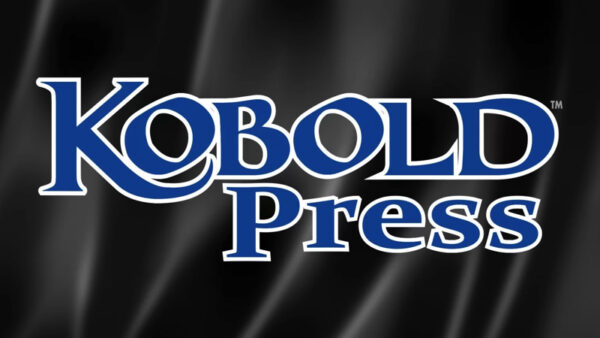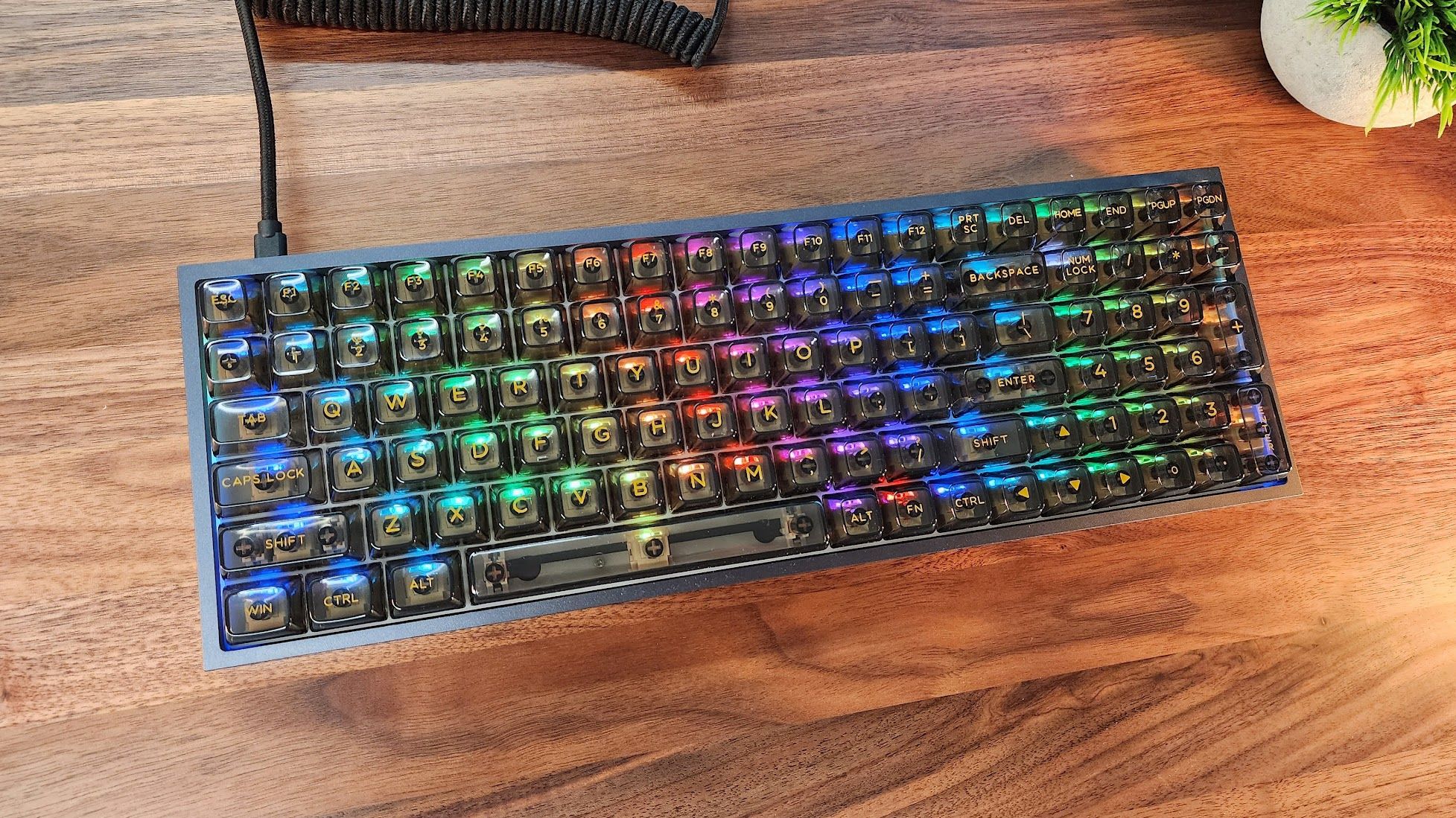
Epomaker has been a brand to watch over the last several years, expertly balancing value with enthusiast-level features. The Epomaker TH100 is one of its latest mechanical keyboards, delivering a compact full-size layout with pre-lubed switches and stabilizers, gorgeous transparent polycarbonate keycaps, a heavy CNC-milled aluminum case, 2.4 GHz and Bluetooth wireless, and more.
At $179, it’s a very solid choice but has a few drawbacks any potential buyer needs to know before adding it to their shopping cart.
Specifications
- Current Price: $179 (Epomaker)
- Brand: Epomaker
- Layout: 1800 compact, 100 Keys
- Hot-swappable: Yes, 3 pin or 5 pin switches compatible
- Case Material: Aluminium
- Keycap Material: PC keycaps
- Keycap Profile: ESA Profile
- Connectivity: USB-C, Bluetooth 5.0, 2.4 GHz
- Software OS:Windows & Mac
- Programmable: Yes
- Anti-Ghosting: Supports NKRO in all modes
- Dimensions: 375 x 127 x 51 mm
- Weight:1.7 kg
Epomaker TH100 – What Is It?
The Epomaker TH100 is an 1800-layout mechanical keyboard. a compact full-size mechanical keyboard. While the name of the layout isn’t well known outside of enthusiast circles, the layout itself probably is.
More commonly referred to as a compact full-size mechanical keyboard, it includes a full number pad, function row, and arrow key cluster, as well as a selection of navigation and editing keys. It compresses all of these keys into one long grid. The lack of spacing takes a little getting used to but isn’t hard to adapt to overall making the TH100 a particularly great middle ground between productivity and gaming.
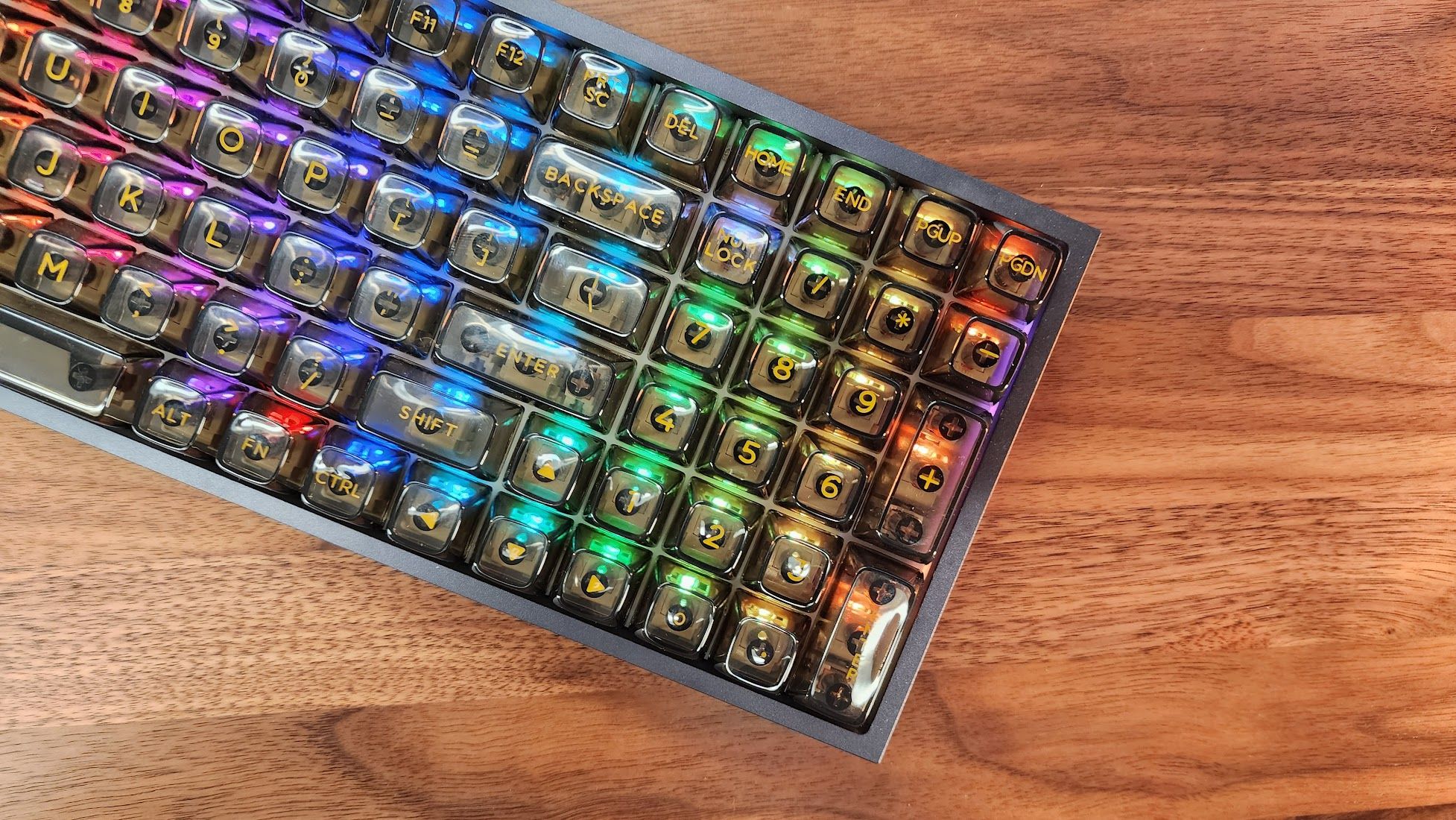
The keyboard sets itself apart in more than just layout, too. In fact, it’s a bit of a genre-blender, meshing productivity and gaming, wired and wireless, and even custom and premade design choices. This is most evident right when you take it out of the box.
The case is made of CNC-milled aluminum and is heavy, weighing in at just shy of four pounds (3.8 lbs to be exact). The metal chassis isn’t just limited to the switch plate or top half of the case, either. The case has been milled from a single block of aluminum, available in white or black. It’s a brick.
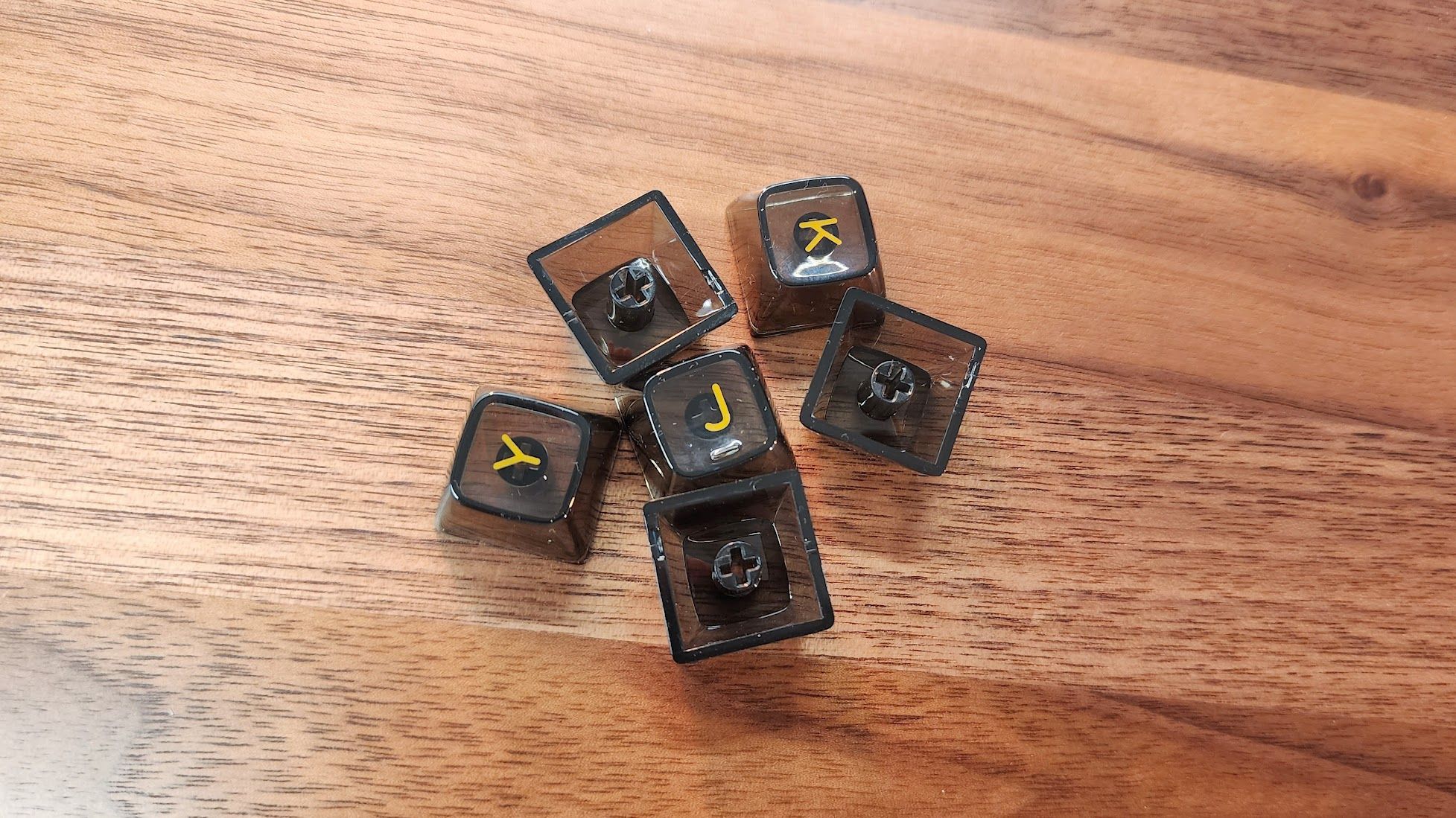
The other immediately noticeable feature, and one of the biggest reasons you would choose this keyboard, is the keycaps. Epomaker has gone with translucent and gloss polycarbonate keycaps in tall ESA profile. You can see everything underneath them, including the switches, but most importantly the per-key RGB backlighting. The black version uses a smoky gray version of the keycaps but the white version is crystal clear, like typing on ice cubes.
These keycaps feel very nice to type on and have a unique, glassy sound to them. They’re very high profile, however, so if you’re not used to these vintage-style keys, you should plan on a bit of a learning curve before they become second nature. Their glossiness also makes them fingerprint very easily, though you’ll really only notice this upon close inspection.
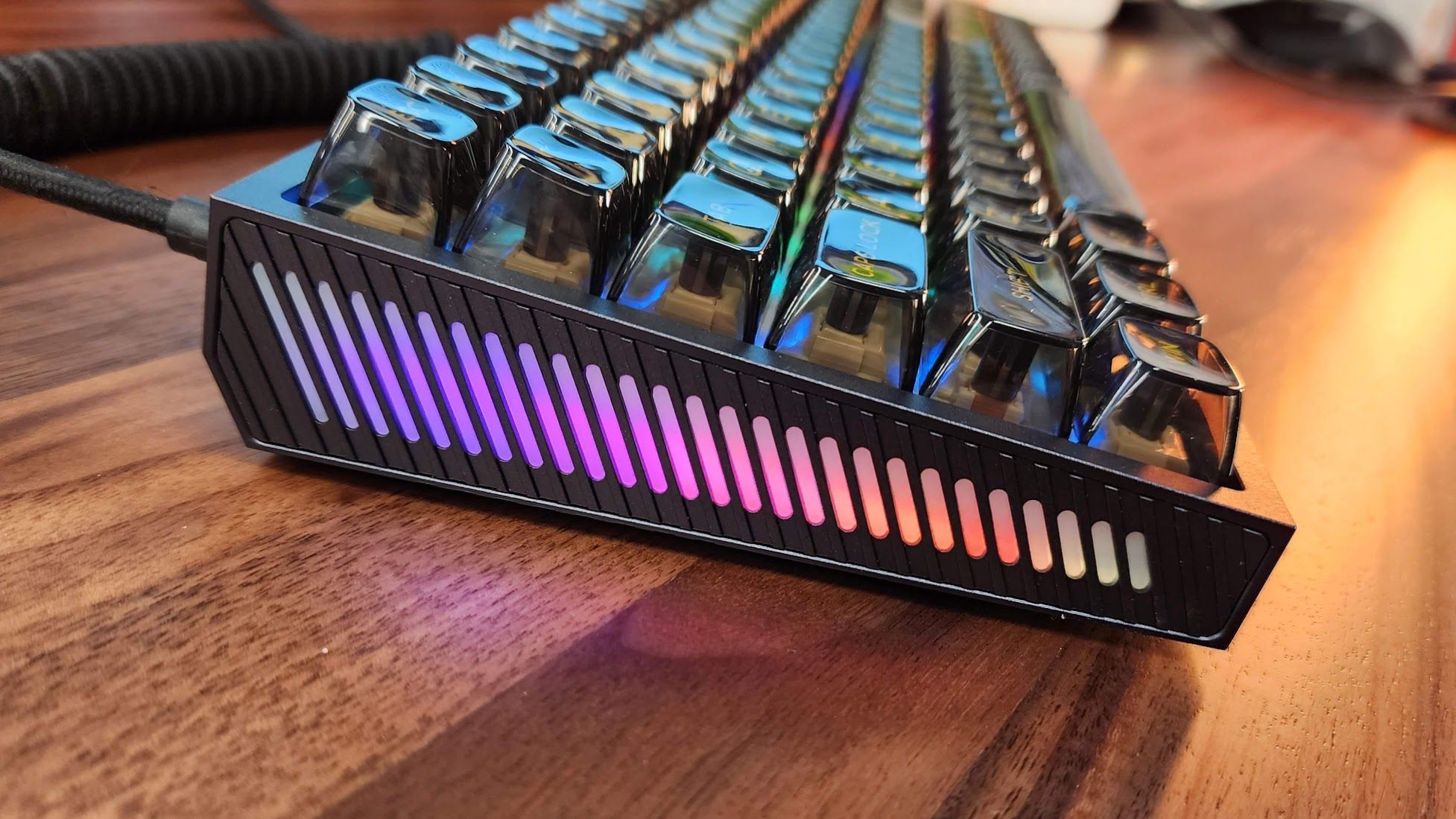
It goes without saying that the keyboard is an RGB showcase (though, perhaps not as much as you might expect — more on that sooner), but it doesn’t end there. The TH100 also features grids on either side with embedded RGB diffusers and a customizable sidelight. It throws a subtle glow around the keyboard and is one of the more unique touches to its design.
Underneath its keycaps, it comes with your choice of MMD Ice Cream switches (linear) or MMD HP Switches. My unit was sent with ice cream switches and they’re excellent. They’re made of silky smooth POM plastic, come with lube pre-applied from the factory, and use long poles for a poppy bottom-out sound. They’re also hot-swappable, so if you want to try something new, you can simply unplug these and set in another.
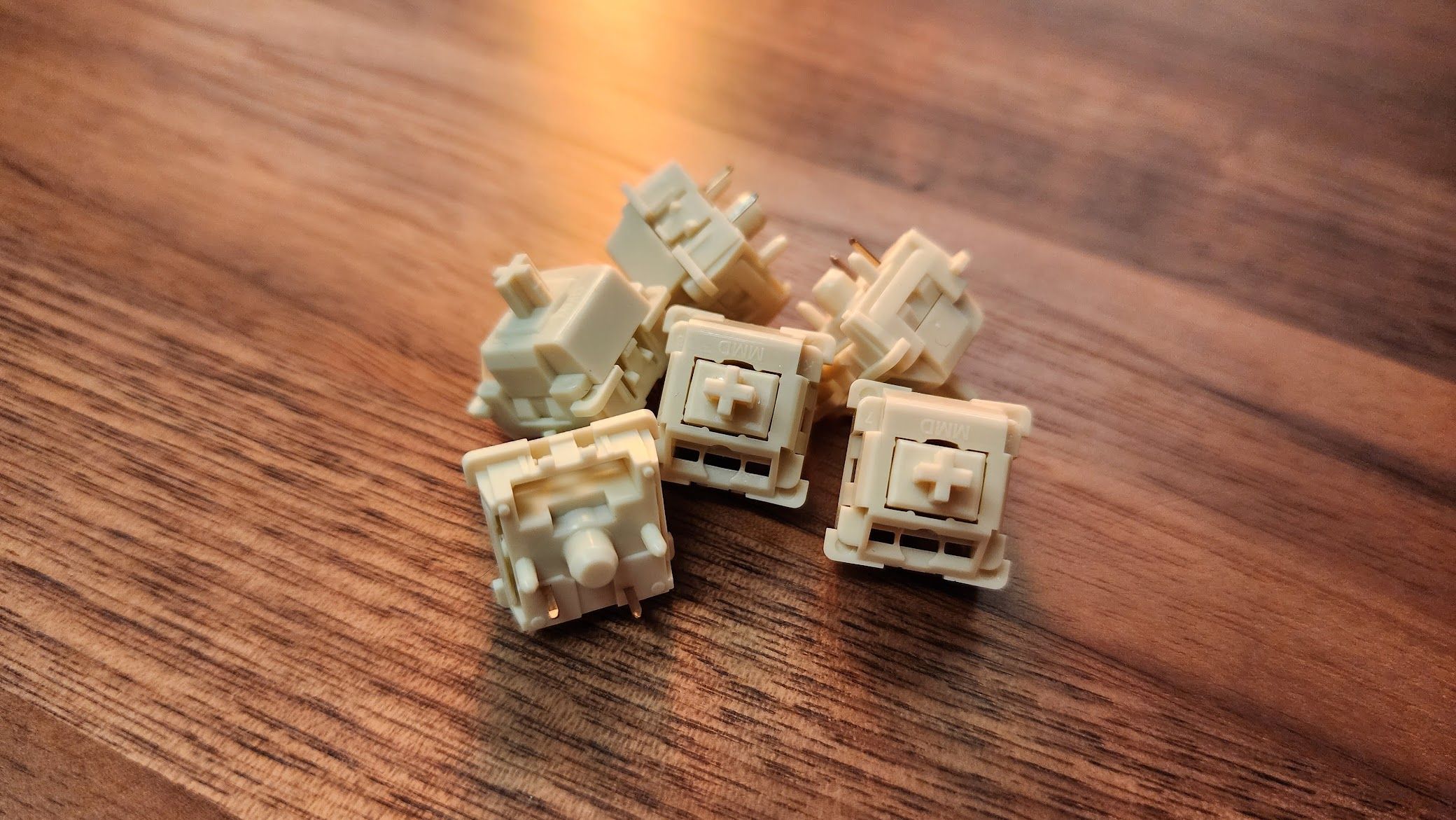
What’s interesting about this choice of a stock switch is that the switches are completely opaque and absolutely cut down on the amount of RGB that’s able to shine through. With see-through keycaps, the RGB has the potential to be very bright, but the switches temper that quite a bit while still allowing it to look good.
So far we have unique keycaps, a CNC-milled case, and enthusiast-grade switches, so if you’re getting the vibe that Epomaker is targeting gamers who may be curious about custom keyboards but not quite ready to make the jump, you would be right. The typing experience really is designed to draw in a lot of those custom features without totally diving into the deep end.
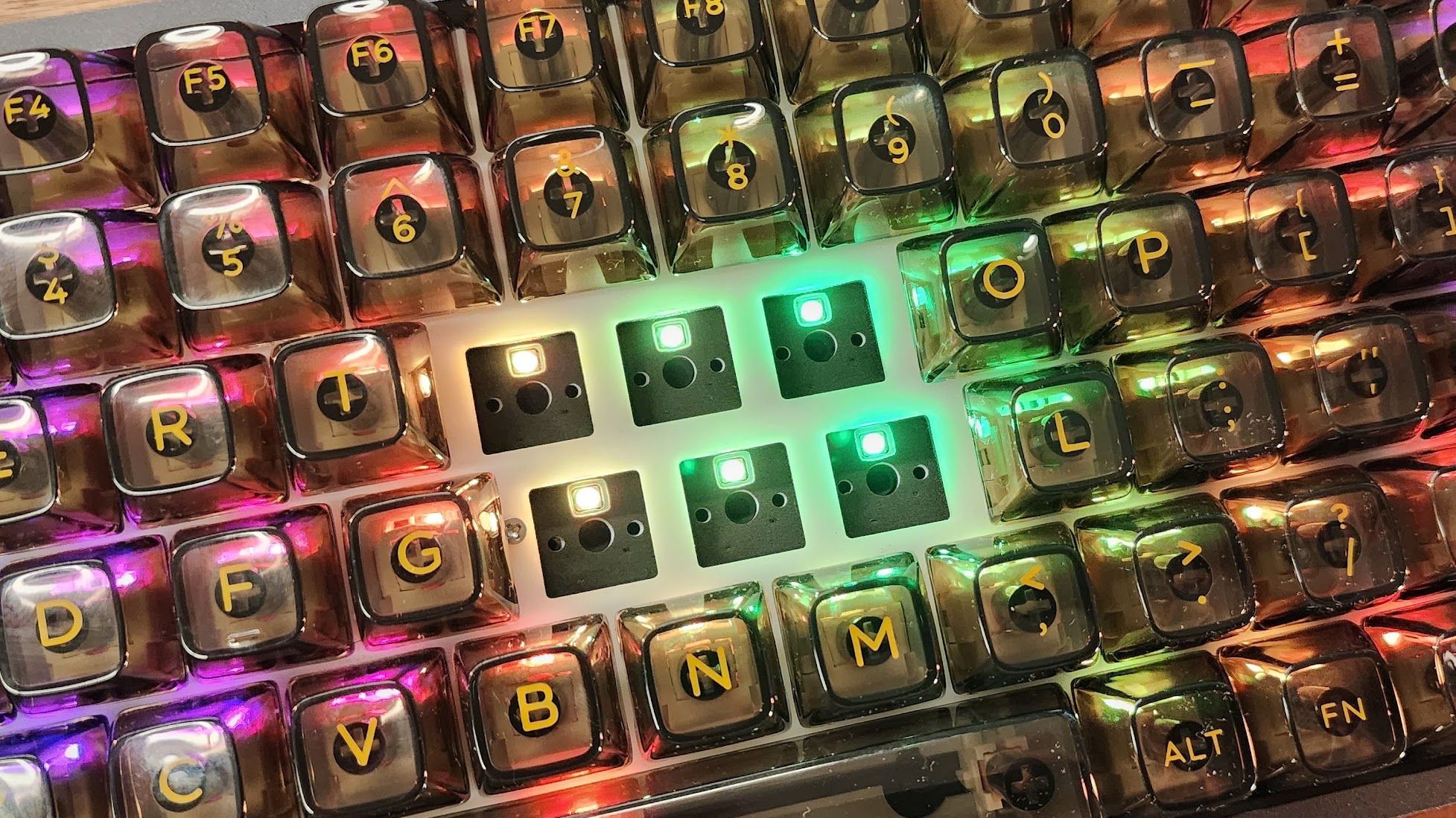
For example, the board seems to use a polycarbonate plate, which provides a deeper typing sound. Beneath the plate and the circuit board is a thick layer of sound-dampening foam. Between the switches and PCB is another layer of foam designed to add a poppiness to the sound character. There’s a final layer of foam beneath the circuit board in the bottom of the case to eliminate any hollowness or reverberation.
Epomaker also did a good job with these stabilizers. They’re plate mounted, so easy to take out and mod, but I only found it necessary to tweak the Space Bar. Overall, they’re well-lubed and sound good out of the box.
For connectivity, it supports wired connections, Bluetooth 5.0 with up to three devices, and 2.4GHz high-speed wireless. There’s a power switch and a slot to hold the dongle milled right into the back of the board which is an uncommon and very welcome touch. The responsiveness is on par with any of my wired gaming keyboards when using this dongle. Bluetooth introduces the expected additional latency but works perfectly well for productivity and normal typing.
These connections were also very fast and reliable. When you select a connection using Fn+1-4, there are only about two seconds of delay. That’s also true when waking the keyboard up from sleep, which it does rather aggressively to preserve the 4000mah battery.
Epomaker TH100 – Not Quite All-In
Taken as a whole, the keyboard is quite fully featured and delivers a great typing experience. But it doesn’t go all-in on enthusiast features. It uses a traditional tray mount design, for example, where the plate and PCB screw directly into the bottom case, rather than the softer gasket mount that’s in vogue right now. It’s an especially interesting choice given that Epomaker went with a flexible plate. Here, really can’t flex at all and appears to be used just for sound tuning.
There are other things too. The switches are north facing, for example. I don’t consider that a major drawback since it means they’ll be compatible with most backlit keycaps, but if you use Cherry profile keycaps and normal, standard pole-length switches, you may find that they have interference. Likewise, the stabilizers are decent but they’re plate mount instead of screw-in like enthusiasts tend to prefer.
The biggest difference compared to core enthusiast boards, and even most gaming keyboards, is the lack of programmability. As of this writing, there is no mention of software on the Epomaker product page and no record of any available in its download section. There are about 15 different lighting modes you can cycle through, but for key remapping, you’ll need to look to third-party solutions. This could change in time as most Epomaker-branded keyboards do feature software gaming features and key remapping.
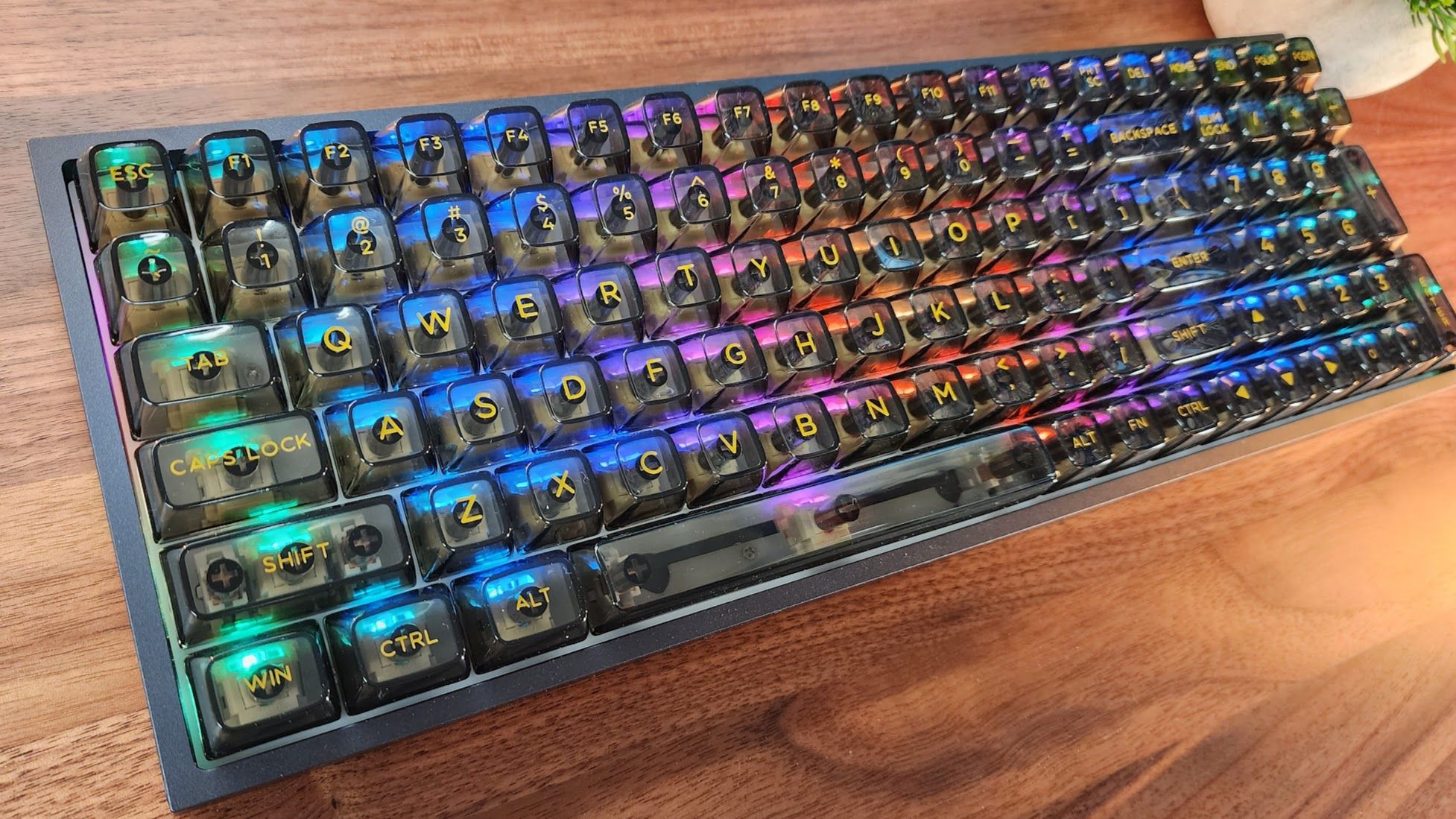
Final Thoughts
Even with the current lack of software support, the Epomaker TH100 strikes an excellent middle ground between enthusiast keyboards and mainstream clackers. I love the metal case and Epomaker has really done a great job of tuning its sound. If you’re not ready to make the jump to a build-it-yourself custom or just want something that’s going to work very well for both productivity and responsiveness when gaming, this is a very good choice.
The product described in this article was provided by the manufacturer for evaluation purposes.

